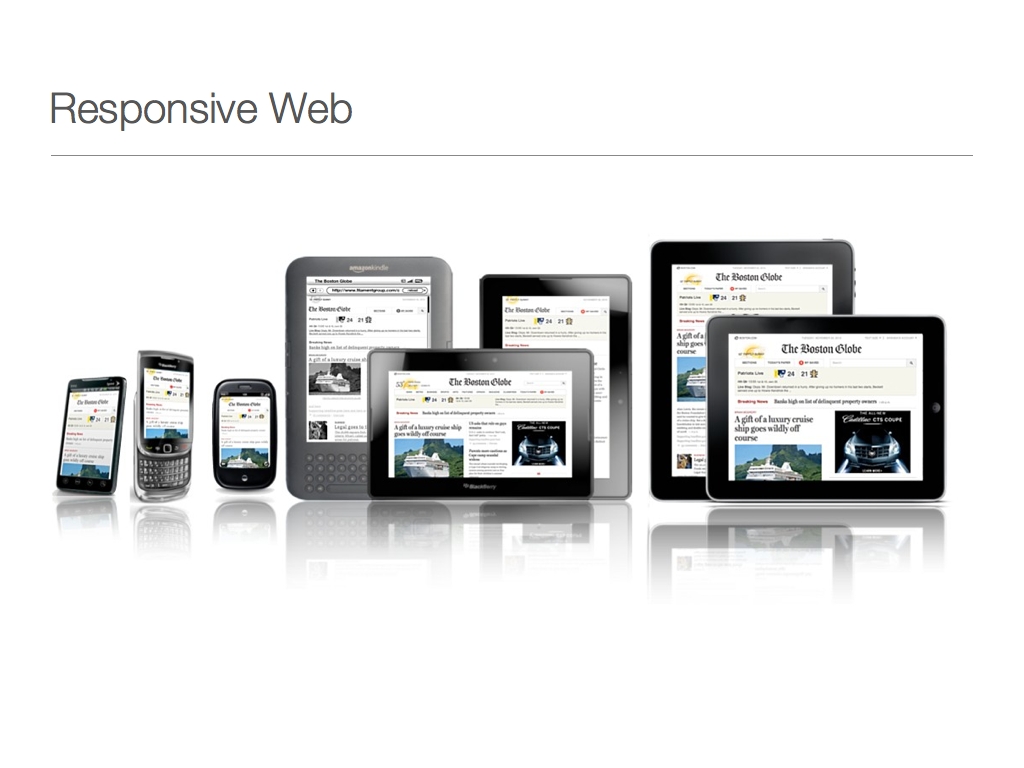


The research also found that 85% users use their smartphones for multitasking while viewing other media, including watching television (48%) and reading newspapers or magazines (42%) .
However, the majority of local media are still a long way from fully exploring the opportunities offered by this medium. While some mobile versions of newspapers are more or less copied from the hardcopy, many newspapers in the U.S. have moved well ahead. A look at what some of them are doing is both interesting and useful.
Mobile Strategies
To address mobile and new media issues facing the media in the future, The American Press Institute (API) has recently teamed up with the Poynter Institute For Media Studies to organize a series of special workshop entitled “The Transformation Tour” for U.S. media executives and professionals. The intention is to examine transformative content strategies, which include meters, members, digital publishing revenue, the future of mobile, and how to grow audiences. Details and videos of the workshop are available at this website:http://www.americanpressinstitute.org/en/Training/Transformation-Tour.aspx.
This summer, as a recipient of the American Press Institute (API) journalism educator fellowship, I attended one of the workshops titled “Future of Mobile”. The event was held in the headquarters of Boston Globe, where some of the most forward looking professionals were willing to share their mobile strategies, some of which may be applicable in Hong Kong.
One of the most interesting speakers was Allen Klosowski, who had worked at the Media News Group (the second largest U.S. newspaper company by circulation) as Senior Director of Mobile and Social Media for Digital First Media. His focus was driving audience and revenue growth in building mobile news apps. He presented the iPad 2.0 design goals for the dailies of the Media News Group, which include: (1) news experience—to improve articles layout, enhanced multimedia, and customize user experience; (2) to get more daily users—traffic, weather, events; and (3) increase revenue opportunities—more advertisement positions per page, more valuable ad positions, geotargeting and map overlay.
In 2012, Digital First Media rolled out 254 apps for all major dailies of Media News Group. As a result, 1,226,412 new apps were downloaded in 2012, according to Klosowski.
Also at the workshop was Damon Kiesow, Boston Globe’s senior product manager. He emphasised the necessary goals for building a responsive mobile app, which includes these five ascending levels: (1) make it available, (2) make it work, (3) make it useable, (4) make it useful, and (5) make it mobile native, which means to create innovative solutions for mobile-centric consumer needs. Kiesow also suggests a 4W1H steps for building mobile apps, which are: (1) who—audience, (2) what—product, (3) where—platform, (4) when—timing, and (5) how—process.
Actually, I had earlier witnessed firsthand what U.S. mainstream media were doing when I served as an adviser of the Hong Kong Journalism Education Foundation in 2012. During its study tour of the U.S. media industry, I led a delegation of senior Hong Kong media executives to 20 major traditional and new media companies, including The New York Times, The Washington Post, Gannett/USA Today, The Atlantic, The Politico, NBC News, Fox News, National Public Radio, CBS 24-hours radio news 1010 WINS, Omnicom Group, Digital First Media, Huffington Post, Newsweek and the Daily Beast, Adobe Publishing, Storify and Google.
We noticed that some media companies, such as USA Today and Gannett (the largest media company in the U.S.) have positions such as social media director. And, the online only Huffington Post’s success is based on a huge pool of bloggers to provide content.
Conceptual Framework
The U.S. media are providing glimpses of the mobile future, but what can Hong Kong’s media actually do? I believe a conceptual framework, which includes three major elements, is important: (1) content creation, how do we create appropriate content, (2) content delivery, what would be appropriate tools or channels to deliver the content, and (3) content consumption, all content and delivery tools must meet the users’ media usage behaviour and preference.
The API workshop is in sync with this conceptual framework. That is, mobile, as the major content delivery device, has changed users’ usage behaviour and thus content must be created to meet the new delivery method and usage behaviours.
Future Journalism Education
While these points are urgent for media professionals to consider, they are equally important for media educators when we train the next generation of journalists and media professionals. In many U.S. journalism schools, an upgrade of the journalism/media pedagogical goals and curriculum is already an active agenda.
In August, at the annual conference of the Association for Education in Journalism and Mass Communication at Washington, D.C., Carol Royal, a professor at Texas State University, talked about directions needed for future journalism education during the digital age. They include new courses such as a good introduction to digital media, multimedia/mobile writing and reporting, history of digital media and the culture of digital media.
For Hong Kong’s future journalism curriculum, it is not enough to just introduce several digital media courses. Hong Kong needs a major overhaul, with the guiding principle being tied in with the conceptual framework of content creation, delivery and consumption, plus an emphasis on law, policy and media ethics.
It is time for Hong Kong’s media professionals and educators to further their alliance in coming up with innovative and practical solutions to best leverage the opportunities offered by the mobile age.
■Tuen-yu LAU
tylau@stanfordalumni.org
(*Dr. Tuen-yu Lau is the founding director of the Master of Communication in Digital Media Program at the University of Washington, 2001-2007 and he was fellowship recipients of The American Press Institute and The Poynter Institute for Media Studies)


